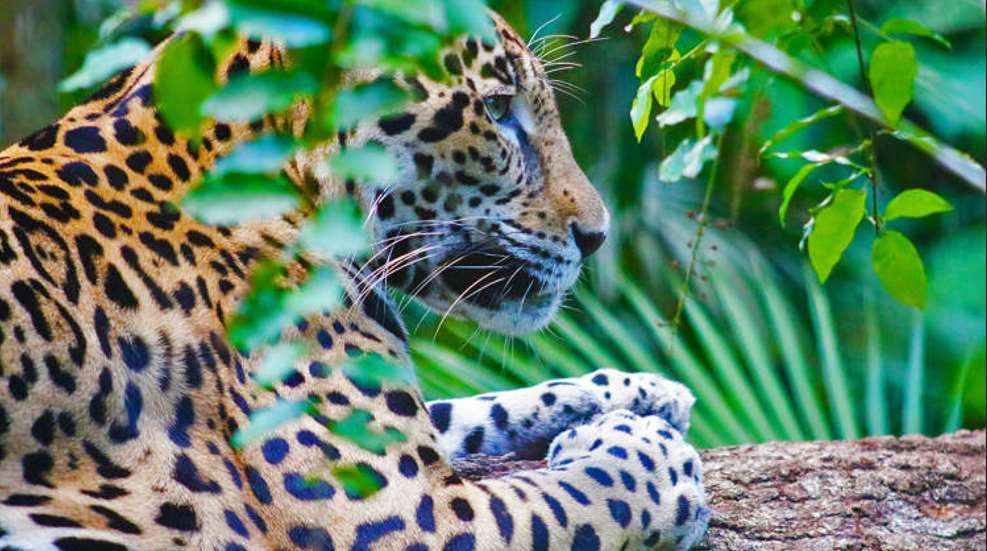
When it comes to predator hunting, cats reign king. There are many opportunities throughout the United States to pursue mountain lion, bobcat and lynx. Some species such as mountain lions are target hunted. Bobcat and lynx are taken incidental to hunting other species or taken on a trapline. In some states the taking of a wild cat is illegal. In other states, there are very strict restrictions on the taking of these cats, and yet other states have very lax or even non-existent laws regarding the taking of these animals. Additionally, some states have no open seasons, others have very short seasons, and at least one state has no closed season for the taking of mountain lions and bobcats.
Many hunters do not know that there are other species of wildcats native to the United States. Unfortunately, these cats, strictly protected as threatened or endangered species in North America, are illegal to hunt. These cats are C.I.T.E.S. (Convention on International Trade in Endangered Species) protected, which means they are state are federally protected from being taken while hunting or by any other means or methods. According to C.I.T.E.S., a category of animals referred to as “spotted cats” all fall under this protection. Bobcats and lynx do not fall under this category. Also, there is one C.I.T.E.S. cat native to North America that is not spotted.
This is why it is so important for any hunter to properly identify any animal they are taking, especially cats. There are eight species of wildcats native to North America. Hunters should know how to identify these animals and their native ranges to avoid making any mistakes that could bring criminal charges and civil fines of over $100,000. North American wildcats include mountain lions, bobcats, lynxes, ocelots, oncillas, margays, jaguarundis, and jaguars.
It is important to be familiar with several definitions when interpreting laws when researching the hunting of wildcats.
Extinct — Extinct means a species no longer exists in any locality, region or anywhere else worldwide.
Endangered — Endangered means any species that is at a real risk of becoming extinct in the near future.
Threatened — Threatened means any species that is vulnerable of becoming extinct in the near future.
Extirpated — Extirpated means a species that is locally extinct or no longer exists in a specific region that was originally once part of its historic range.
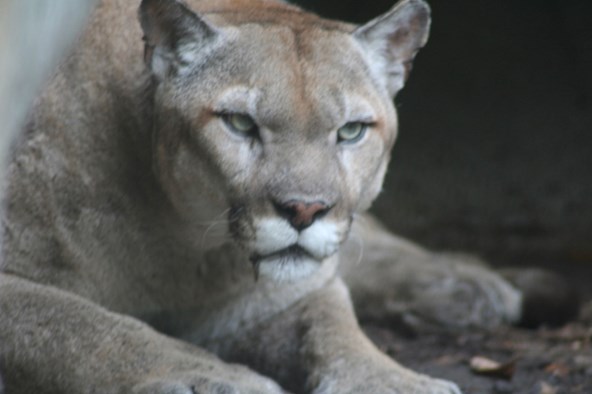
Photo by author
Mountain Lion (Puma concolor)
Historic and current range extends to all the continental U.S., southern border of Canada including the Canadian east coast and southern Alaska.
Size: Up to 8 feet in length and weighing between 110-200 lbs.
Color: Adult Mountain Lions range in color from tawny gray, tawny red and several shades of brown. The back of the ears has black patches, while the front is white. White hair can be found around the mouth, underparts of the neck, chest, abdomen, legs, and tail.
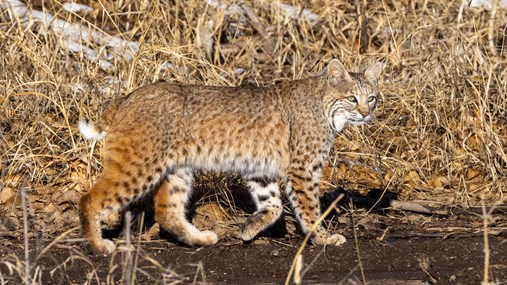
Bobcat (Felis rufus)
Historic and current range extends northward of the Continental U.S. to and including the southern border of Canada. They are now found in great numbers in the Great Lakes region.
Size: Up to 48" in length and weighing between 16-40 lbs.
Color: Fur color varies from grayish to reddish brown, streaked and/or spotted with black. The ears and tip of the very short tail are black, and the belly fur is white with black spots.
Characteristics: Bob-tailed and has slightly tufted ears.

Lynx (Felis lynx)
Historic and current range extends through Alaska, Canada and the northern border of the U.S. Small pockets of population are found throughout the northwestern states and central Colorado.
Size: Up to 48" in length and weighing between 22-50 lbs.
Color: Fur color varies from grayish to reddish brown, streaked and/or spotted with black. The Lynx’s ears and tip of the very short tail are black. Belly fur is white with black spots.
Characteristics: Bobtailed and has prominently tufted ears.
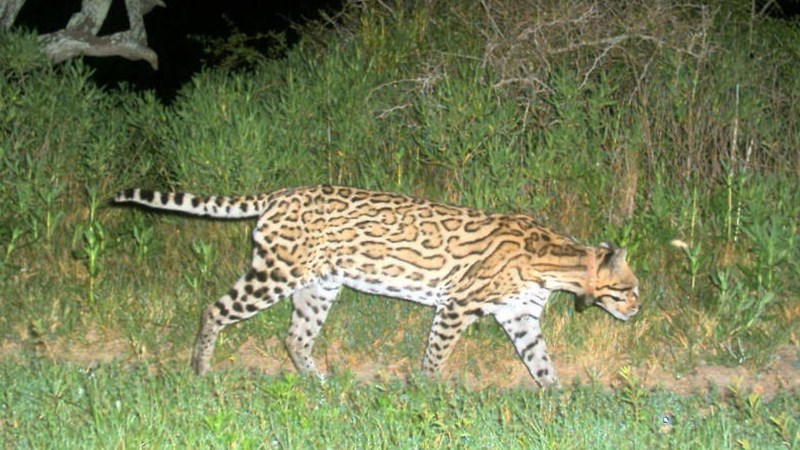
Ocelot (Lepardus pardalis)
Historic range extends from South America, northward into the southwestern U.S., south Texas, and extending through east Texas and eastern and south Louisiana. Current U.S. range extends from south and central Texas and southern Arizona.
Size: Up to 60" in length and weighing between 18-40 lbs.
Color: The Ocelot has short and thick, velvety fur that is usually tawny-yellow to reddish-grey in color and marked with black chain-like rosettes on its back and sides. There are dark spots on their legs and stripes on their head and face which are distinctive to the individual. They have a long tail that is generally marked with dark rings.
Facts: Ocelots are the largest member of the genus Lepardus.
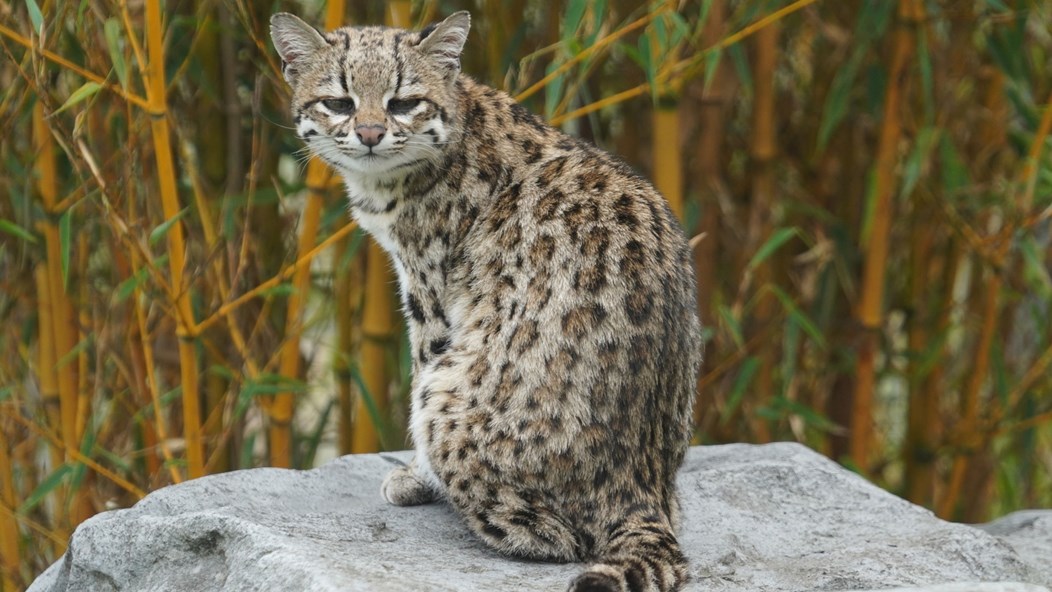
Oncilla (Lepardus tigrinus)
Historic and current range extending from the South American Cloud Forest of the Andes (3,000-10,000 feet) to the savannas of Central America and northward into the southwestern U.S. and south Texas through coastal neotropical regions. Even though believed to occasionally enter into Texas, confirmation is questionable.
Size: Up to 40" in length and weighing between 4 to 8 lbs.
Color: The Oncilla has thick, plush fur that is light brown to brownish yellow, with spots or “rosettes” across its back and on the sides. The rosettes can be black or brown with an open center. The spots on the legs get smaller in size as they go down the leg.
Facts: The Oncilla is often referred to as “Tiger Cat.” This wildcat is often confused with its close relatives ocelot and the margay.
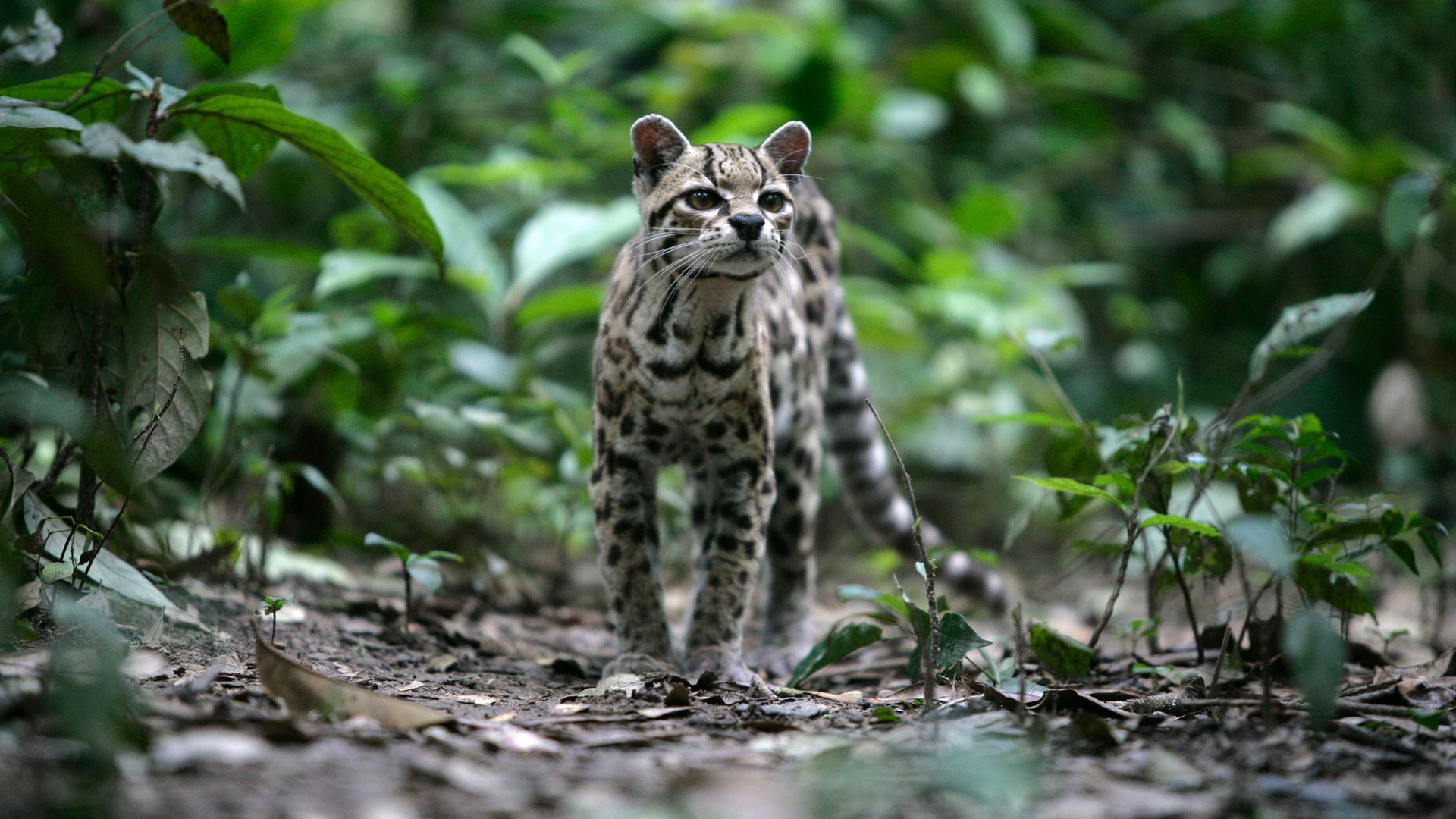
Margay (Lepardus wiedii)
Historic and current range extends from South America, northward into the southwestern U.S. and south Texas through coastal neotropical regions.
Size: Up to 52" in length and weighing between 9-20 lbs.
Color: The margay has thick, plush fur that is usually tawny-yellow to reddish-grey in color and marked with black chain-like rosettes on its back and sides. There are dark spots on their legs, and stripes on their head and face, which are distinctive to the individual. They have a long tail that is generally marked with dark rings.
Facts: They are arboreal. Hind legs can rotate 180 degrees to easily navigate in the forest canopy and hunting other arboreal prey. They are often called the tree ocelot. The margay is often confused with its near relatives the ocelot and the oncilla.
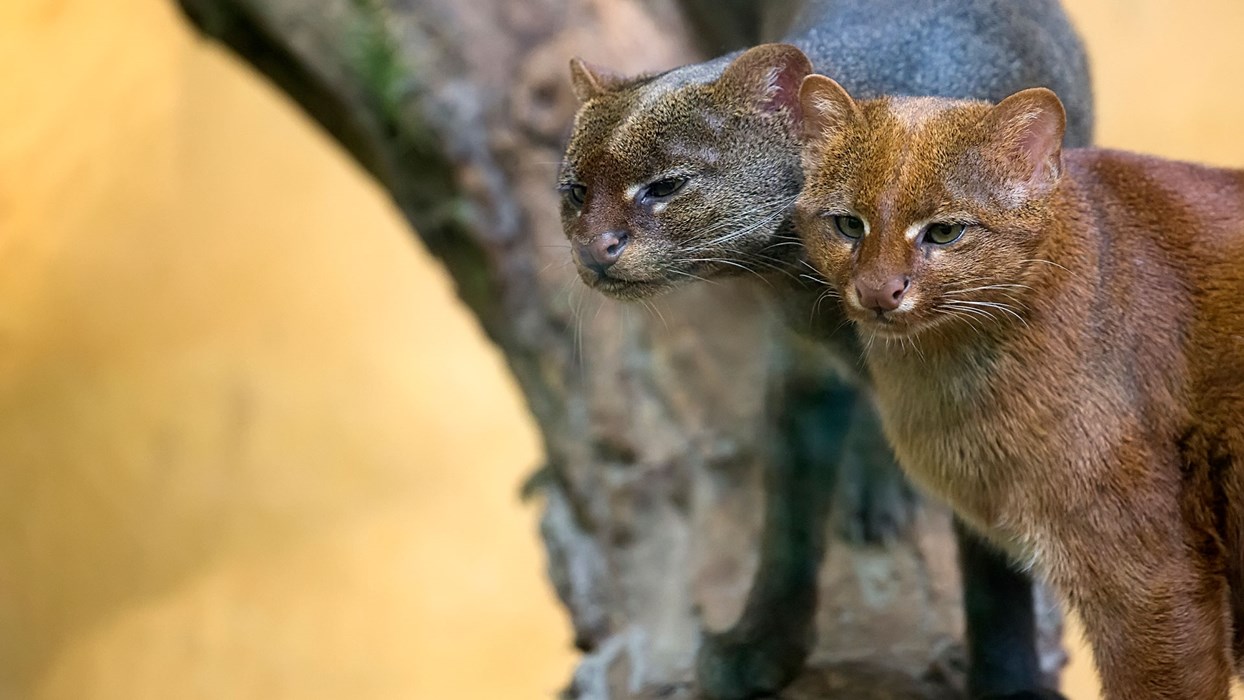
Jaguarundi (Herpailurus yaguarondi)
Historic and current range extends from South America, northward into the southwestern U.S. and south Texas through coastal neotropical regions.
Size: Up to 55" in length and weighing between 9 to 20 lbs.
Color: The coat is unspotted and uniform in color, with, at most, a few faint markings on the face and underside. The coat can be either blackish to brownish grey (grey phase) or foxy red to chestnut.
Facts: The jaguarundi has short legs, an elongated body, and a long tail, giving it an appearance somewhat like an otter or marten. For this reason, these animals are sometimes referred to as "otter cats." Their ears are short and rounded.
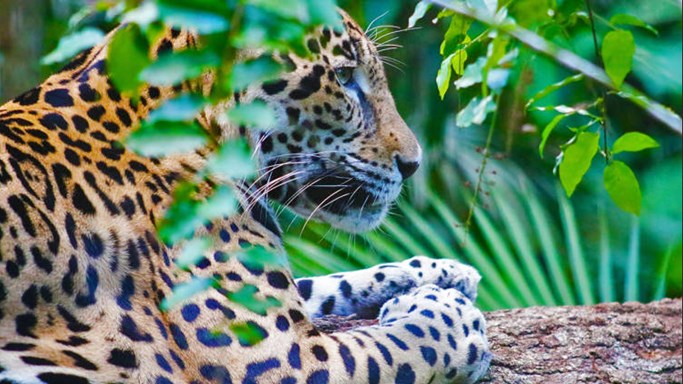
Jaguar (Panthera onca)
Historic range extends from South America, northward into the southwestern U.S., south Texas, and extending through east Texas and eastern and south Louisiana. Current U.S. range only includes a breeding pair in southern Arizona and transient reports in southern Texas, New Mexico and Arizona.
Size: Up to 8 feet in length and weighing between 125-350 lbs.
Color: A jaguar has a yellowish-brown or reddish-brown coat with a pattern of black rosettes with a spot in the center, and open and uneven edges. A leopard's rosettes form a complete, unbroken circle with no markings in the middle. The jaguar's coat pattern helps it remain hidden as it hunts for food. Jaguars that live in open habitats have paler rosettes than the ones that inhabit forested areas. Jaguars have white muzzles and white fur on their bellies. Some jaguars that live in the deepest parts of the rain forest have black fur that shows a faint pattern of black rosettes. These cats are commonly called black panthers.
Characteristic: The jaguar is the only cat in North and South America that roars.
Facts: Third largest cat in the world and has a very large head and very powerful jaws and muscular limbs. The last jaguar seen in Texas was killed in south Texas on Jan. 30, 1946 after killing 28 calves in three weeks. The cat was 7½ feet long and weighed 200 lbs.














































